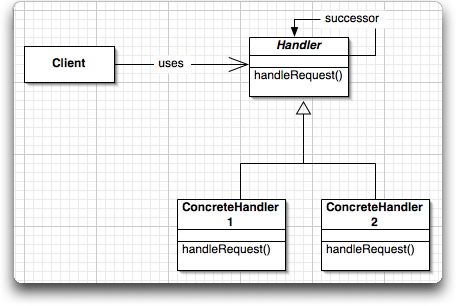Chain of Responsibility
- The Chain of Responsibility pattern uses a chain of objects to handle a request, which is typically an event. Objects in the chain forward the request along the chain until one of the objects handles the event. Processing stops after an event is handled.
Purpose
- Avoid coupling the sender of a request to its receiver by giving more than one object a chance to handle the request. Chain the receiving objects and pass the request along the chain until an object handles it.
UML Diagram
The role of every class:
- Handler - defines an interface for handling requests
- RequestHandler:
- handles the requests it is responsible for
- If it can handle the request it does so, otherwise it sends the request to its successor
- Client - sends commands to the first object in the chain that may handle the command
Applicability
Here are a few situations when using the Chain of Responsibility is more effective:
- More than one object can handle a request
- The handler is not known in advance
- The handler should be determined automatically
- It’s wished that the request is addressed to a group of objects without explicitly specifying its receiver
- The group of objects that may handle the request must be specified in a dynamic way
External Links
- External Links
--Djeyarat 15:49, 2 April 2007 (EDT)

